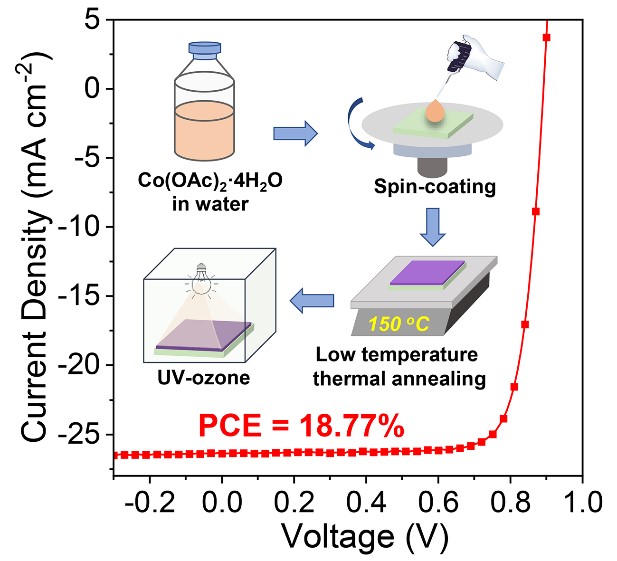Prof. Qiang Peng’s research team of theSchool of Chemical Engineering has published in Angewandte Chemie International Edition a research paper entitled “18.77% Efficiency Organic Solar Cells Promoted by Aqueous Solution Processed Cobalt(II) Acetate Hole Transporting Layer”. The researchers have developed a new hole transporting layer based on cobalt acetate and its green preparation process of aqueous solution, which has improved the energy conversion efficiency of two components of organic solar cells to the highest record of 18.77%. The School of Chemical Engineering of SCU is the sole corresponding work unit of this achievement.

The development and utilization of green energy is an important path for mankind to deal with the global energy crisis and climate change. Converting inexhaustible solar energy into electric energy is one of the most promising ways for energy crisis.

Using low-cost CO (OAC) 2 · 4H2O as raw material, Qiang Peng and his research team created an efficient and durable hole transporting layer.“A robust hole transporting layer (HTL), using the cost-effective Cobalt(II) acetate tetrahydrate (Co(OAc) 2 ·4H 2 O) as the precursor, was simply processed from its aqueous solution followed by thermal annealing (TA) and UV-ozone (UVO) treatments. The TA treatment induced the loss of crystal water followed by oxidization of Co(OAc) 2 ·4H 2 O precursor, which increased the work function. However, TA treatment differently realize a high work function and ideal morphology for charge extraction. The resulting problems could be circumvented easily by additional UVO treatment, which also enhanced the conductivity and lowered the resistance for charge transport. The optimal condition was found to be a low temperature TA (150 o C) followed by simple UVO, where the crystal water in Co(OAc) 2 ·4H 2 O was removed fully and the HTL surface was anchored by substantial hydroxy groups. Using PM6 as the polymer donor and L8-BO as the electron acceptor, a record high PCE of 18.77% was achieved, higher than the common PEDOT:PSS-based solar cell devices (18.02%).” (Abstract)
https://onlinelibrary.wiley.com/doi/10.1002/anie.202110550
